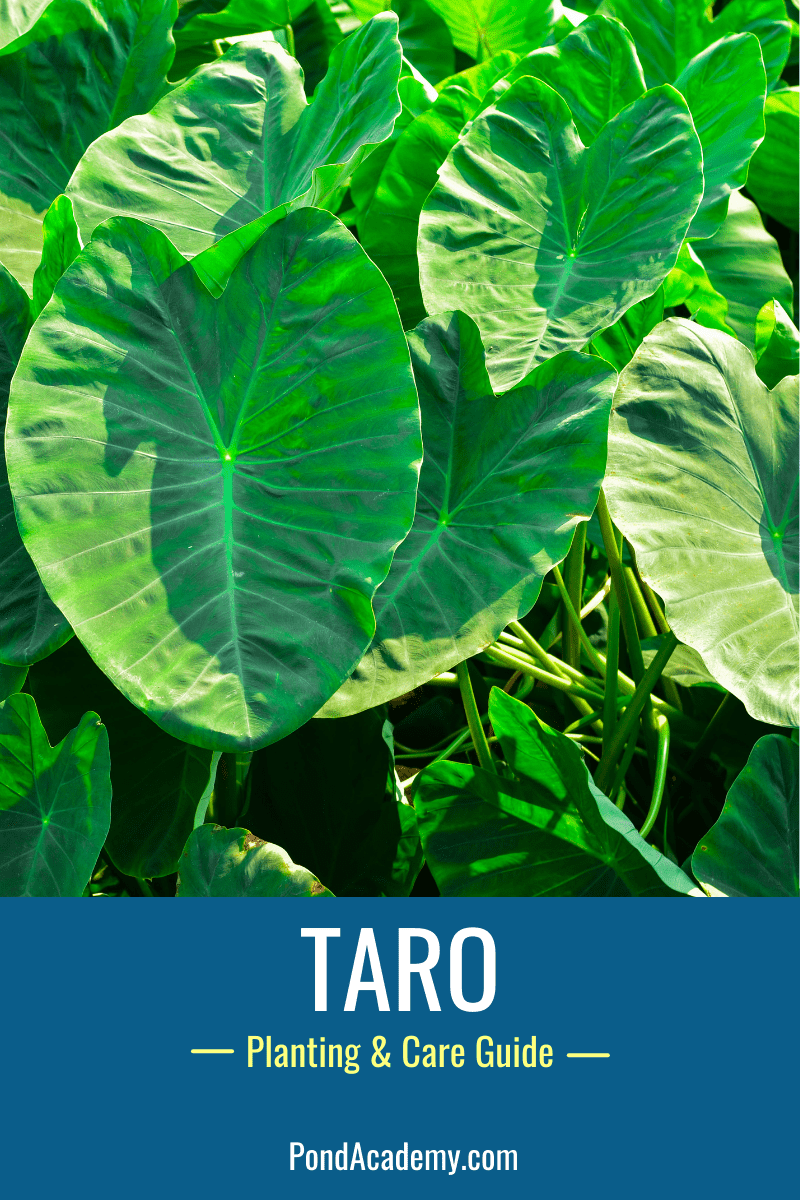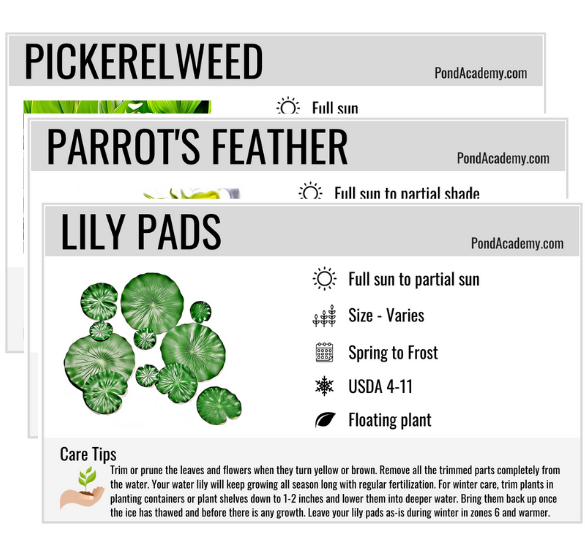Taro Pond Plant - Care & Grow Guide
Pond Academy is reader-supported. Buying through links on our site may earn us an affiliate commission. As an Amazon Associate I earn from qualifying purchases.

One of the easiest ways to infuse the tropical look into your patio, deck, or pond is to introduce Taro (Colocasia esculenta).
Often referred to as Elephant Ear, this pond plant is a great sight to behold, thanks to its large, lime-green leaves that are heart-shaped and resemble an elephant's ear. You can also find Taro plants with black or purple colored leaves.
Taro looks great in pots around the patio or pool, or plant shelves close to the edge of a pond. This pond plant can grow over 4 feet tall, making it the perfect screen, border, or backdrop.
Taro is a common feature across the Pacific, alongside other important food crops. The versatile roots of Taro can be cooked like potatoes! They are often made into chips, boiled, baked, or mashed.
Common Names
Taro, elephant ear, colocasia esculenta, blue hawaii, black magic, black coral, kalo, godere, water taro
Plant Type
Bog plant
Light Requirements
Full Sun to Partial Shade
Hardiness Zones
USDA 8-11
Bloom
Summer - Typically June to August
Grow Up To
24 inch spread
4 feet high
Foliage Color
Green, black, or purple
How To Plant Taro In A Pond
For best results, Taro should be planted directly into the pond planting shelves (1 to 3" deep) or in a planting container and placed into the pond.
To plant using containers:
- Fill a 5-gallon container half full with planting media.
- Place aquatic plant fertilizer tablets into the bottom half of the planting media
- Fill the container 2/3 to the top with more planting media, covering the fertilizer.
- Place the plant in the center of the pot while spreading the roots out and covering them with the planting media. The crown (the part connecting the stems and the roots) should go as low as 1 inch under the surface of the planting media for best results.
- Place container on a planting shelf in your pond.
Tip: Do not use bagged potting mix and similar lightweight soils as they will ultimately cloud the pond water.
Get Our Best Pond Tips Sent to Your Inbox for Free!
Join thousands of others and learn from our decades of pond building and maintenance experience! Your pond will thank you!
By subscribing you agree to receive emails from PondAcademy.com. We will always respect your privacy and you can unsubscribe at any time.
Taro Care Guide
It is best to prune or trim the stems once they start turning yellow or brown. Remove and discard the detached parts completely to minimize the amount of excess organic material in your pond.
During winter, remove the tropical bog plants from the pond and replace them the following season. Alternatively, you can remove and relocate them to a warm indoor space.
Taro Care Card
Download our free printable care card for the Taro plant! Click the care card below and save the PDF file to your computer. You can easily print off the 3x5 care card or access it right from your phone. Get all the important information you need to keep your Taro plants healthy and happy!
Plus, we provide a blank card for you to print and fill out yourself. Print it as many times as you like to create cards for all your plants!

Pond Plant Care Card Set







